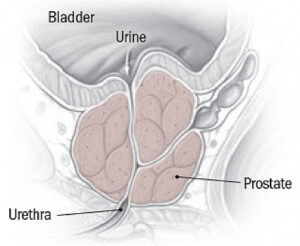When your baby has reached the three month mark, it’s time to prepare for sleepless nights. Your little one will be experiencing something called a sleep regression and may not be able to recall how to fall asleep or stay asleep for long periods.
Don’t worry! There are plenty of strategies you can use to help your baby sleep through the night. Some of these include establishing a soothing bedtime routine, swaddling them before bed, and transitioning their nap schedule from three naps per day to two. You’ll also want to make sure that baby is getting enough daytime sleep, as this is when they’re most awake and active.
What is sleep regression?
Has your baby suddenly stopped sleeping well, or woke up soon after sleeping, after being able to sleep previously? This may be a sign of sleep regression. A sleep regression occurs when a toddler who usually sleeps well refuses to nap, starts waking up in the night, or wakes during the night and refuses to go back to sleep.
Sleep regression occurs when a baby’s rapid growth causes sleep disturbances. 3 months after birth, when the neck sits and brain development progress, 8 months when the viewpoint begins to change due to separation anxiety and standing up, making them feel anxious about leaving their parents, and 11 months when the ego develops and the life schedule becomes easily disturbed. In general, it occurs around the same time, but the timing depends on individual growth.
Some people experience these phenomena, while others may feel nothing at all. If you are frustrated with your baby’s sleep problems without having any solutions in mind, you may want to think about 3 month sleep regression, which occurs when sleep patterns are reversed.
These are the symptoms of sleep regression in three-month-olds.
- They are most likely going through regression when their fussiness grows for no apparent cause and becomes stressful.
- Your infant doesn’t sleep well at night and instead takes more naps during the day.
- They experience a change in appetite, are irritable and inconsolable, and are restless when sleeping.
How to help your baby sleep
A three-month-old newborn needs 14 to 17 hours of sleep per day, according to the National Sleep Foundation of the United States. Many babies appear to sleep for 14 to 15 hours on average. It’s a period when they are a lot more awake than when they were just born. When babies are about 3-4 months old, they begin to distinguish between day and night. It’s at this time when kids start to build a sleep cycle, such as increasing the time they wake up in the day and progressively falling asleep at night. More newborns will be able to sleep at night when they are about 3 months old. On the other hand, many babies sleep lightly and wake up frequently in the middle of the night. There are some ways to help your child sleep again after their 3 month sleep regression without losing any sanity.
Establish a soothing bedtime routine
At this age, the baby sleeps approximately 10-12 hours at night and takes several naps during the day. Now is the perfect time to adjust your baby’s sleep schedule and naptime. Create a bedtime routine for your baby and stick to it to guarantee that you can cope up with 3 month sleep regression.
Toddlers frequently struggle to fall asleep for fear of missing out on something exciting. A peaceful and calm nighttime ritual might help them sleep better. The list involves taking a bath, changing clothes, reading stories to your child at bedtime, and singing lullabies. It’s also beneficial if you give your infant a pleasant toy but keep all the noisy, overstimulating toys away. Sleeping at 7 p.m. is advised for your infant because he or she needs 10-12 hours of sleep every night. As long as your approach is consistent, you can do whatever you want. You can also wake your baby up at the same time each day if your baby sleeps longer than usual.
Swaddle your baby before bed
Swaddling is beneficial for sleeping because it simulates the experience of being in a mother’s tummy, allowing your baby to sleep peacefully. Babies appear to sleep all day, but experts claim that they aren’t very good at sleeping, causing them to cry at night. Swaddling also allows you to put the infant to sleep while it is wrapped, so you won’t have to wake your baby in the middle of the night, and you can easily put your baby to sleep while maintaining a sense of security.
Transition their nap schedule from 3 naps per day to 2
This isn’t something that happens overnight. Over the course of a month or two, naps will gradually decrease (some children will take longer). This time is referred to as the transition phase. When the number is lowered from three to two naps per day, there are three days of three naps, one day of two naps, and so on. It will eventually decrease to the point when only two naps are taken each day.
Make sure that they are getting enough daytime sleep
Your baby will be able to tell the difference between day and night approximately 3 months after birth, and the time spent waking up will be around 3 hours. Furthermore, when the number of feedings during the day grows, the number of feedings during the night decreases, and sleep time becomes more organised. Babies under the age of three months have a brief cycle of REM and non-REM sleep, with a high proportion of REM sleep (light sleep), therefore even a minor trigger will wake them up.
A baby’s nap is essential for growth and development, but taking too many naps might interfere with the night’s sleep and cause a day-night reversal.
In the months after birth, your baby will probably nap at least twice a day – once in the morning and once in the afternoon. A late afternoon nap might also be necessary. It can be helpful to schedule your baby’s naps between 9 a.m. and 1 p.m. A well-sleeping baby will ease the strain on mom’s body. It may be sufficient to take two naps in the morning and afternoon for babies who sleep for a baby who is going through 3 month sleep regression.
Conclusion
There is no doubt that frequent night wakings during this stage of sleep regression are exhausting. To think that sleep is going to get worse from now on is discouraging after caring for a newborn for months. Our number one piece of advice for surviving 3 month sleep regression is to take a deep breath and tell yourself or your infant that it won’t continue forever — no one enjoys sleep regression! It’s a trying time for your baby and a stressful moment for you. Remember that there is not a lot you can do to “stop” or “prevent” sleep regression. You just have to go through it, so keep that in mind. Take the steps above to help your baby sleep well once again – and rest assured you won’t have to worry about jinxing another restful night’s sleep for yourself.





